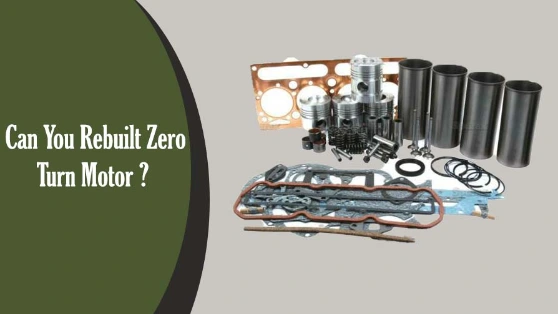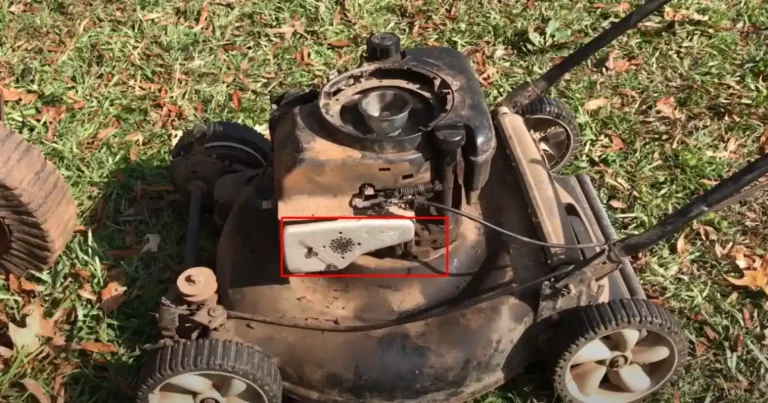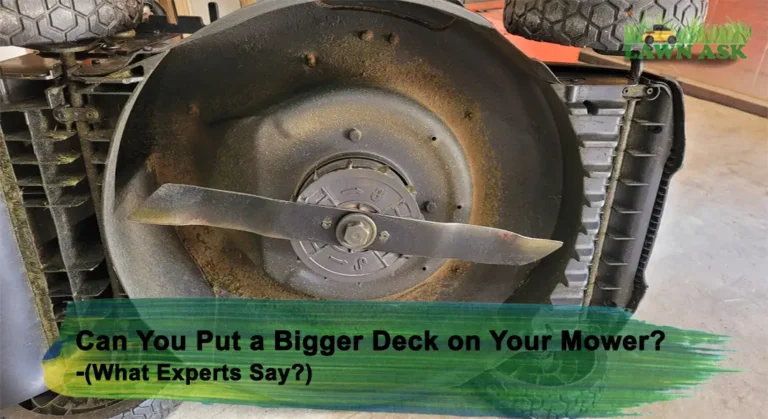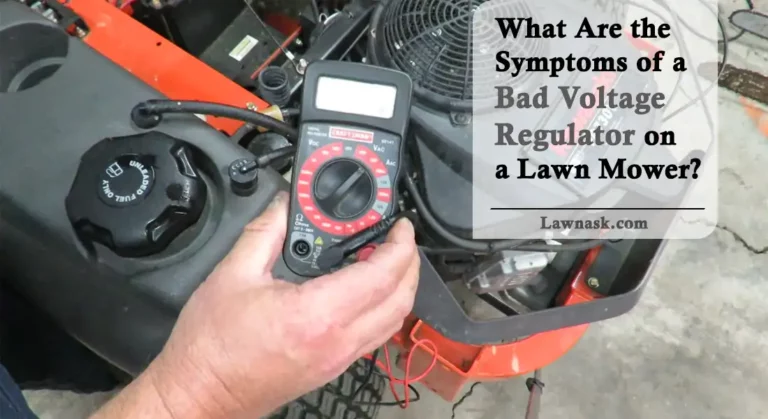Does Flooding a Lawn Mower Ruin It? (Everything You Need to Know!)
Isn’t your lawn mower starting? Does it seem like a flooded lawn mower? Well, you may get afraid when your flooded lawn mower won’t start. You’ve already attempted a few tries but it’s failed to start. Hence, the question can arise in your mind, Does Flooding a Lawn Mower Ruin It?
If you drain the flooded engine immediately, then it doesn’t ruin the lawn mower. Again, you’ve to inspect spark plugs, gasoline, air filters, and carburetor. If the internal parts get damaged, you need to clean or replace them. Hence, you can get back your lawn mower alright.
I’ve discussed all of the possible causes and remedies to figure out how you can get back your lawn mower! Let’s dive into it.
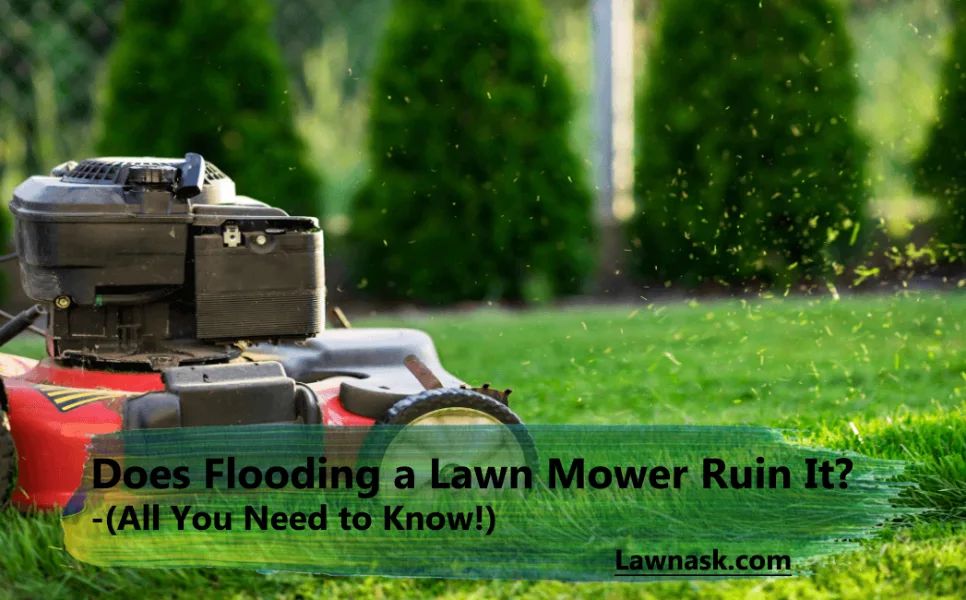
What Causes a Lawn Mower to Flood?
There will be many reasons why a lawn mower flooded! Before solving this issue, you need to clarify which exact reason makes the lawn mower flooded. The possible causes are listed in the table below! Check this one!
5 Possible Reasons that Signs of a Flooded Lawn Mower
| Possible causes | How to inspect |
| 1. Wet spark plug | Unscrew the plug and check whether it’s wet or not |
| 2. Clogged Air filter | Remove the air filter and check whether it is clogged due to water exposure or dirt. |
| 3. Dirty Carburetor | Check the carburetor and fuel intake pipe whether it’s content moisture. |
| 4. Overpriming | If the carburettor sprays too much gas on the combustion chamber then it’s cause for overpriming. |
| 5. Water entered into the engine, cylinder or crankcase | Check each part of the lawn mower because they can cause permanent damage. |
Well, you may already start inspecting the parts of your lawn mower. If you have found the root cause, then solving the issue is very simple to do! Let’s check the next part of what’s actually waiting for you!
Read Also: Can I Left My Push Mower in The Rain?
How to Unflood a LawnMower: Step-by-Step Guideline
In this guideline, you’ve to follow step-by-step instructions to fix the flooded lawn mower. I’ve discussed the easy process and additional tips which will help you although you’re just a beginner. Let’s move forward!
Step 1: Take Safety Precautions
Take necessary safety precautions before starting the project. Because the flooded lawn mower can be dangerous when there’s a source of flames.
- Wear safety gloves, gear, goggles and coveralls.
- Perform the project in a place of good ventilation
- Always save your body parts from high air pressure.
Step 2: Gather the Necessary Tools
Gathering the necessary tools is the most important step which saves your time and energy. The necessary tools you need for this project are-
- Screwdriver
- Torque Wrench
- Grip pliers
- Clean cloth
- alcohol-based starter fluid.
Step 3: Drain Away as Much as Water you Can
If you have noticed that your lawnmower has flooded because of heavy rain or water exposure then you need to drain away almost all water.
Most of the cases, water entered the cylinder, engine or crankcase. It can cause permanent damage. So, check the parts and remove the water. If this is dirty water then clean it with a hose. After draining the water, clean and dry the mower with a clean cloth.
Step 4: Unscrew the Spark Plug
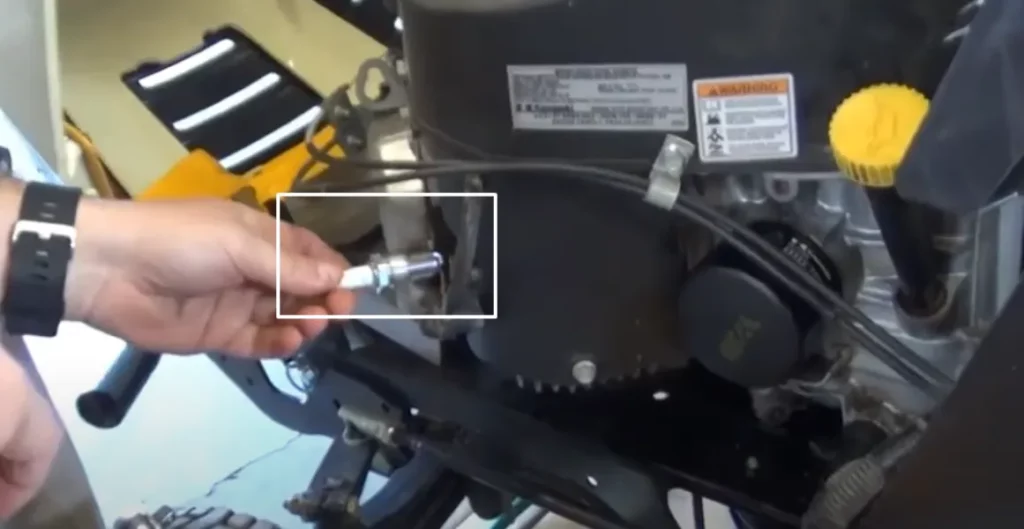
A dirty or wet spark plug is the most common cause of flooding the mower. First, unscrew the spark plug and check if it’s wet or dirty.
Clean the spark plug. Then dry them by applying alcohol-based starter fluid. Or, you can dry them with a clean cloth.
Step 5: Check the Air Filter
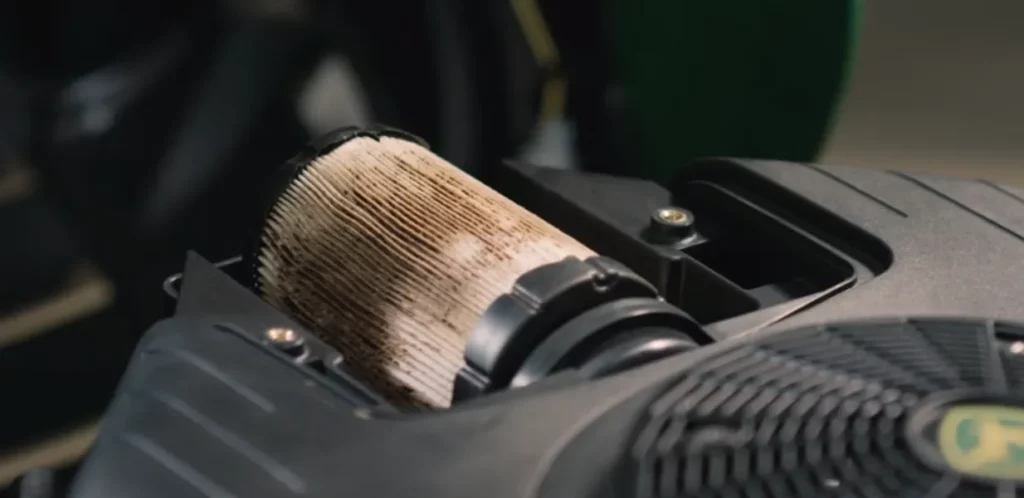
A clogged air filter can also be the reason behind the flooded lawn mower.
To check the air filter, first, unscrew the plastic body of the lawn mower. You have to use a screwdriver and grip pliers to remove this one. Then check the air filter if it’s clogged dirt or not. If it seems dirty, then clean it with a brush, and then dry it immediately.
Step 6: Inspect the Carburetor
Next, check the carburetor because a wet or dirty carburetor can be responsible for flooded lawnmowers. Inspect if the fuel intake pipe is wet or not. If it is, then replace it. And don’t forget to fill it with new gasoline or fuel.
Step 7: Clean or Replace the Part if Necessary
Check all the internal parts if there’s a watermark present on them. Again, if there seems like permanent damage you need to replace the part. Otherwise, if any parts look dirty, then clean and dry them. It’s an easy process to solve the issue.
Tips: Don’t forget to check the operation of a lawn mower after each inspection.
Read Also: What is a PTO on a Lawn Mower?
Frequently Asked Questions (FAQs)
Will a lawn mower be OK if it gets wet?
Yes, you can get your lawn mower performance okay although it’s a little bit wet after rain or for other reasons. But, sometimes overwater can cause permanent damage to the engine, cylinder, or crankcase.
How long do you have to wait after you flood a lawn mower?
You’ve to wait for about 15-20 minutes after solving the flooded lawn mower issues. If the engine gets flooded, then the time to drain away the water is nearly 10-15 minutes. Again, cleaning the dirty parts of the lawn mower will take 15-20 minutes.
What happens when you overprime a lawn mower?
Overpriming a lawn mower causes the engine to flood. For overpriming, you will notice too much fuel in the combustion engine. Hence the spark plug get wet and failed to ignite.
Verdict
Once you’ve wet your lawn mower in the rain or flooded for another reason, you may face problems until it gets solved. Therefore, you’ve to store the lawn mower carefully and protect it from any moisture or rain. Again, inspecting all the internal parts will be a plus point for protecting the lawn mower from any permanent damage!
If you haven’t enough confidence to do this solving project, call on a professional. Because it’s sometimes a risky process if you aren’t capable of doing it with confidence. That’s all for today. Let’s tell us about your valuable opinion. Ba bye..!!
Related Posts:
- Effective Methods to Get Rid of Grass Clippings – Step-by-Step Guide
- Proven 5-Step Method to Get Rid of Spider Webs on Grass
- Fertilize or Dress First? The Truth about the Ideal Order for Lawn Care
- Life or Death: Unraveling the Mystery of Yellow Grass on Your Lawn
- Everything You Need to Know When Your Bagger Fails to Pick Up Grass

